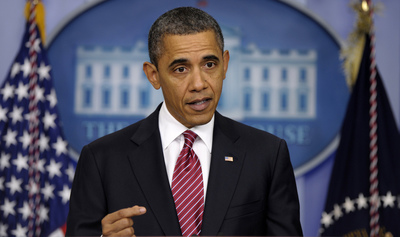
BY THE EDITORS |
What If Movie Screens Were Truly Connected?
In our connected age, the audience is no longer passive. Can the film industry keep up with their own customers?

In my last post Movie Theaters: The Last Unconnected Screen I noted that movie theaters have been slow to innovate, especially when it comes to all things digital. Readers joined in with comments and ideas about how movie theaters might improve their experience if they were connected to that high speed, multidirectional, distributed network called the Internet.
As Jon Patricof rightly pointed out, people like “out of home” experiences whether they attend a concert, a Broadway show or see a movie with other human beings in the same large room.
The question is not whether people still like to see movies with others. Instead the question is whether the movie industry has the will to innovate in order to keep up with its own customers. So far, the answer is no.
What could innovation look like?
Let’s imagine what our movie theater experience might look like if every movie screen was connected to the Internet in the same manner as our computers, tablets, smart phones and TVs.
Now any video on any server anywhere in the world could potentially be seen on a movie screen. Yes, I know that certain quality specs may have to be met—but the general principle is still true.
Two important points become clear:
1. The universe of potential content becomes much larger.
2. Like the regular consumer with a tablet, the theater owner has much more control—because she does not have to rely on a movie distribution company for her content.
Now she gets to pick from concerts, operas, church services, a TED talk, a sporting event, a university lecture or the Machinima channel on YouTube. The list goes on. Some theaters already have some of this content—but not many.
When they become truly connected movie theaters are no longer movie theaters. Instead they are public places where people gather together to watch something on a big screen. That something might be a movie—but it does not have to be a movie.
Should we wonder why the movie studios are not eager to have movie theaters get truly connected?
And yet paradoxically, a truly connected movie screen can also show movies in a much cheaper, more flexible and interactive manner—and therefore bring more people to these places we no longer call movie theaters— to watch more movies.
Imagine if a theater owner could just call up a movie from a server controlled by the distributor, agree on the terms to show it through an online dashboard, receive the digital file and then show the movie to a paying audience.
Or take this a step further as @DavidNicolas suggests, “…might we ever get a situation where audiences just turn up and choose what to watch from an online catalogue?” or “Don't see why Netflix can't run their own screens, let you book one for self & friends, and present you with a streaming menu.”
These may seem like wild suggestions but are doable with connected screens. Each one puts the theater owner and her patrons in the driver’s seat—which is where they want to be.
Imagine this scenario for what I call a crowd sourced screening.
Using Meetup a person puts out the word that she wants to see BLADE RUNNER in her local theater and gets enough people to sign up for a particular date so the theater owner gets the movie as suggested above. Enthusiasm spreads and others around the country join in as well and the audience grows as more theaters book the movie.
Add another twist—Ridley Scott agrees to do a live question and answer session after the scheduled screening. Make it easy for him, let him Skype in from his office or home and get a moderator to coordinate all the tweets that come in with questions.
An instant community sees a movie it loves and gets to interact with its creator. Imagine these screening for all kinds of movies—for all kinds of communities going on continuously. More people have more reasons to show up at movie theaters.
Extend this interactivity—start to imagine second screen experiences that are built into the screening itself.
Sara McGuyer suggests we look at what Bravo does with its shows and embedded tweets. David Larkin builds on what some TV networks are doing with tablets and social interactivity. He writes:
“How about special screenings where patrons, instead of being told to put their phones away, are encouraged to use their second screens while they are watching the film? You don't want to go to that screening don't, like the quiet car in a train. This might be a way to bring in and excite a whole generation of new filmgoers and create a new kind of social viewing experience.”
I already hear many readers howling about this idea!
But as David says, you can always go to the quiet car.
I see these suggestions in the same vein as THE ROCKY HORROR PICTURE SHOW midnight screenings of many years ago. They were fun, loud and crazy. Most of all they featured real audience participation.
That is the final point to be made. In our connected age, the audience is no longer passive. The audience has become the “end user” and is looking for things to do. They want to have immersive experiences and to share them with others.
If movie theaters do not get truly connected and provide these opportunities, movie attendance will simply go down.
And for those of us who love movies, we don’t want that to happen, do we?
Photo: Massanutten Pictures

